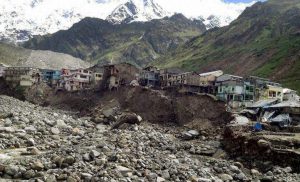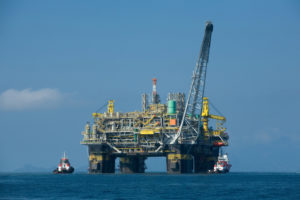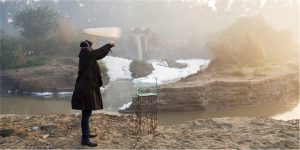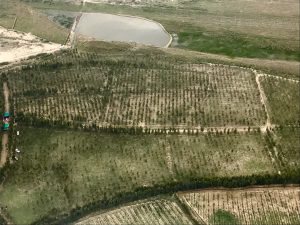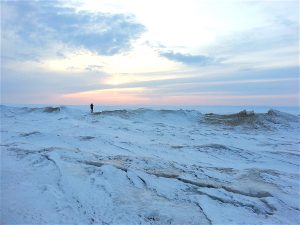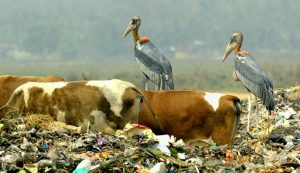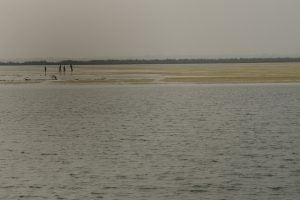After a series of discussions and bilateral visits, Bangladesh and India have decided to run a joint feasibility study to examine if the Ganga Barrage project puts any adverse impact on the transboundary river basin. There is hope of a series of Memorandums of Understanding (MoUs) being signed during the forthcoming visit of the Bangladeshi Prime Minister Sheikh Hasina to New Delhi from April 7-10. This visit comes nearly two years after the Indian Prime Minister, Narendra Modi, visited Bangladesh in June 2015. Official talks between the two prime ministers will take place on April 8.
Sources within the Bangladesh water resources ministry told thethirdpole.net that the government is trying to hold a technical committee meeting between Bangladesh and India on the proposed barrage project ahead of the Prime Minister’s visit. However, they are yet to confirm the date and venue of the meeting.
During the visit, the two neighbours might sign a MoU on the proposed project, Zafar Ahmed Khan, Senior Secretary at the water resources ministry told thethirdpole.net.
What is the purpose of the Ganga barrage project?
The barrage project, if implemented, would help supply fresh water to south-western Bangladesh, known as the Ganga Dependent Area (GDA) that includes the world’s largest mangrove forest, the Sundarbans. The GDA started facing paucity of fresh water flows during the dry seasons since the construction of the Farraka barrage – which became operational in 1975 – on the Ganga river in the Indian state of West Bengal.
The construction of the Ganga Barrage was planned in 1972, soon after Bangladesh won its independence from Pakistan, but the plan was shelved after the assassination of Sheikh Mujibur Rahman, the father of the nation, in 1975.
Dhaka has already finished the feasibility study on building the 2.1-kilometre-long barrage in Pangsha, Rajbari district, some 98 km downstream from the Farakka barrage. It will take two to three years to construct the main barrage, and 10 to 12 years to complete the project.
See: Bangladesh seeks Indian cooperation to build $4 billion Ganges barrage
See: Ganga barrage top priority for Bangladesh
The proposed project has a reservoir to augment the flow of water and its equal distribution, in both dry and wet seasons, over the GDA. The barrage would also supply water to some small rivers in both Bangladesh and the West Bengal. These distributaries of the Ganga are in danger of drying up completely.
Zafar Ahmed Khan told thethirdpole.net that the joint feasibility study will be conducted on the Ganga to identify the possible impact of the barrage project. “An Indian team is expected to arrive in Dhaka soon and then a joint study team will be formed to do so,” he said, adding that India is now talking about basin-wise management of transboundary rivers which is a positive sign for Bangladesh.
In January 2015, India requested Bangladesh to share the complete feasibility study report, including the mathematical modelling and morphological studies for the barrage construction. Bangladesh provided the report to India. Later, an eight-member technical team of engineers led by Bhupal Singh, chief engineer at India’s Central Water Commission, came to Bangladesh last October for a two-day visit. The team was briefed by Bangladeshi experts and taken to the project site. Later, they held a series of meetings with relevant ministries and departments in the capital.
During the visit it was decided that India and Bangladesh would form a Joint Technical Sub-group to study the potential impact of the project. At least one representative of the West Bengal state government would be included in the group. However, as with the Teesta Water Sharing Agreement, India’s central government has not been able to get a ‘green signal’ from West Bengal.
Nevertheless Bangladesh has hopes that the agreement may come through. Bangladesh Water Resources Minister Anisul Islam Mahmud said, “We must conserve water in the 164-kilometre-long catchment of the river upstream of the Ganga barrage site. Of this, about 82 kilometres of the catchment area is located in India,” adding that a team of experts from India will visit Bangladesh to discuss the issue as they have some concerns about the siltation of the river.
Mahmud said Bangladesh will re-examine the issue to know whether the barrage project will put any adverse impact on river basin in India.
Eminent water expert and former member of the Bangladesh-India Joint River Commission (JRC), Ainun Nishat, said that the project should be implemented as soon as possible to protect the country’s south-western region.
“The barrage will be a win-win for both Bangladesh and India. I believe the Ganga barrage should be built jointly with India,” he said.
Deals to be signed during Prime Minister’s visit
Officials at the ministry of foreign affairs said that both Dhaka and New Delhi are working on fine tuning the discussion points and deals which are planned to be signed during Prime Minister Hasina’s visit. An inter-ministerial meeting was held on Sunday to discuss the progress on overall preparation of the Bangladesh side. After the meeting, Bangladesh Foreign Secretary Shahidul Haque informed the media that as many as 30 bilateral agreements/MoUs will be signed during the visit. For Bangladesh, this is going to be the highest number of deals signed with any country in one single visit, and will include areas like defence, telecommunications, railways, shipping, power, peaceful use of nuclear technology, trade and commerce, education and agriculture.
![<p>Loading site on the Ganga, near the Farakka barrage [image by Malcolm Payne]</p>](https://dialogue.earth/content/uploads/2017/04/Ganga-Farakka-Malcolm-Payne.jpg)

